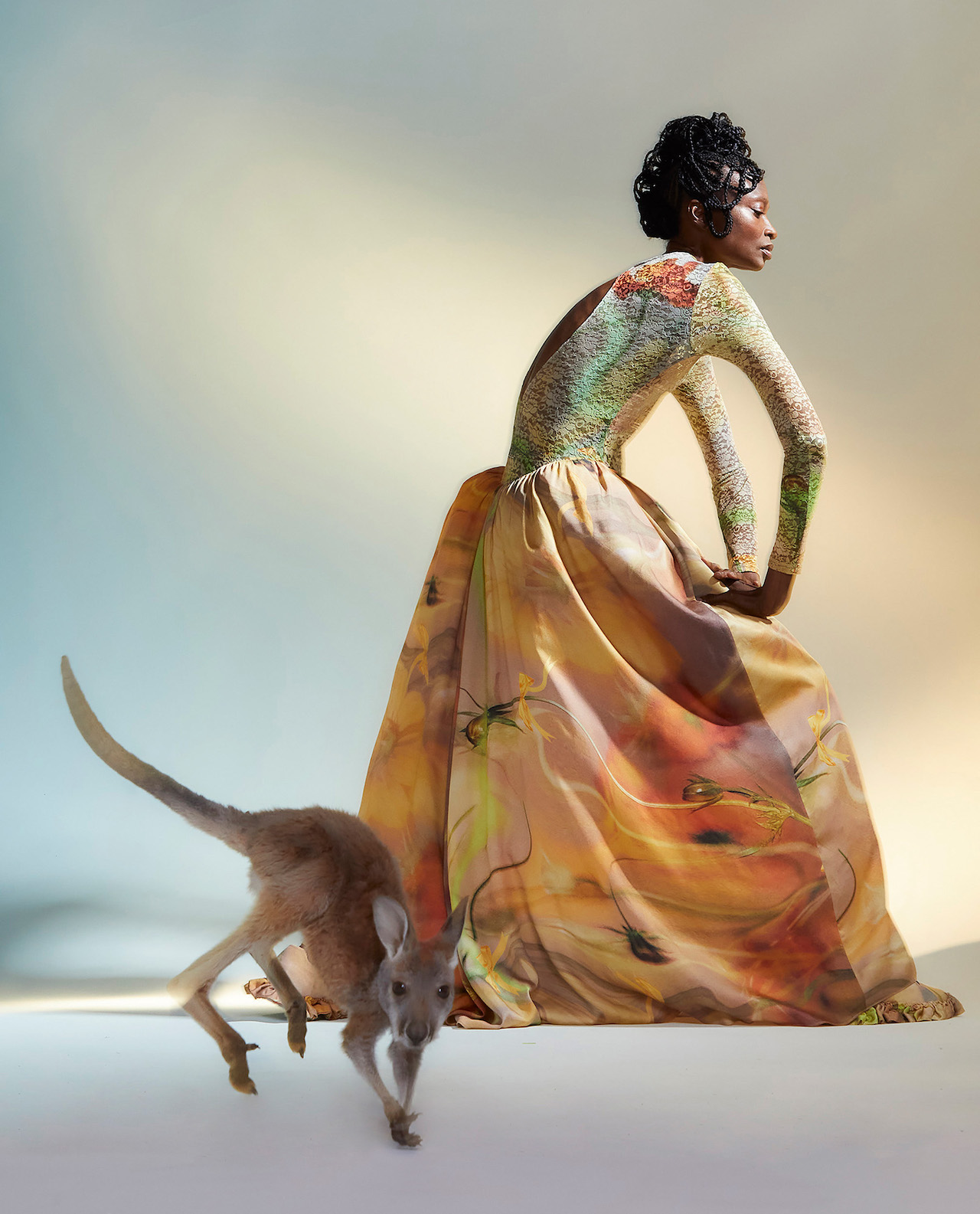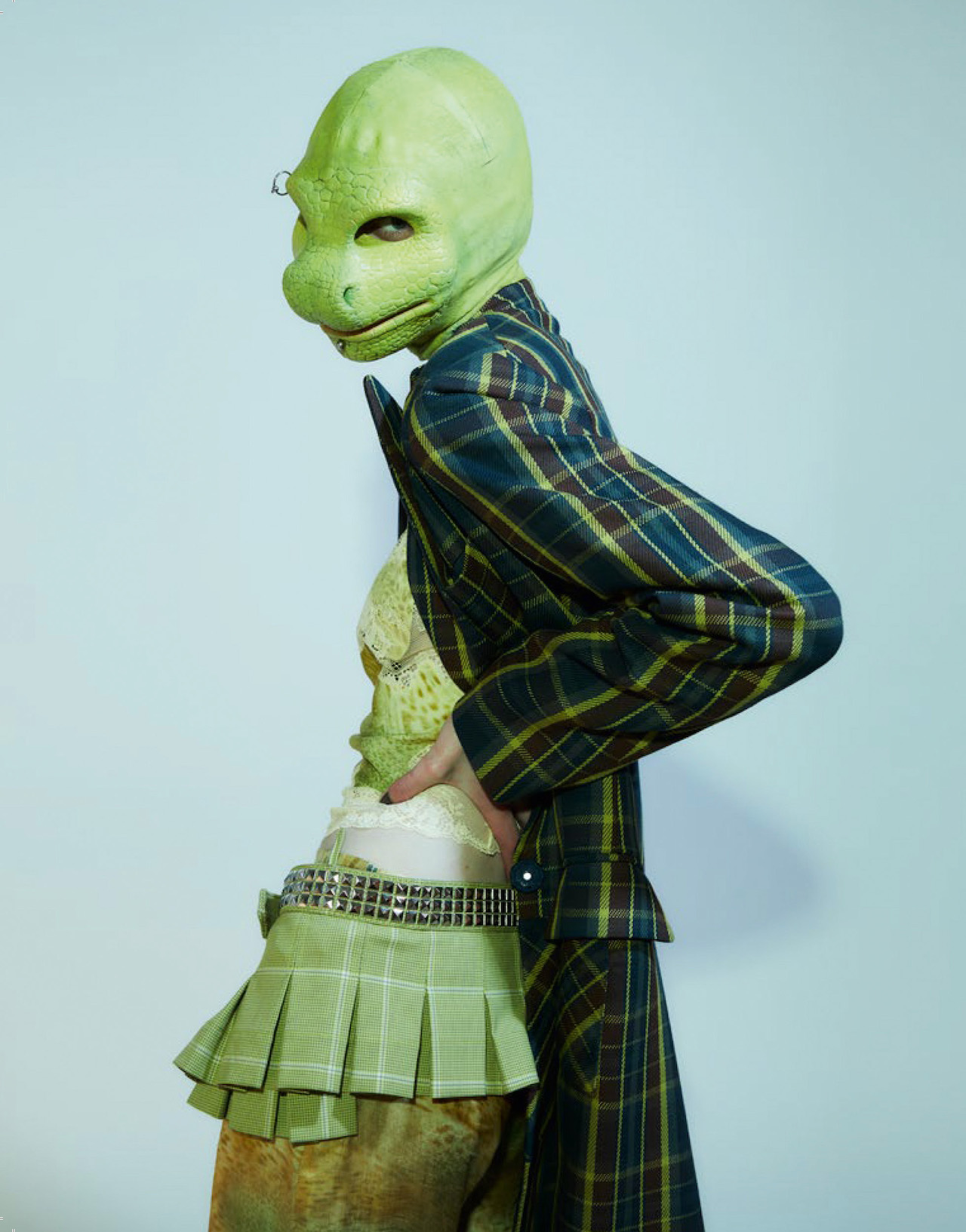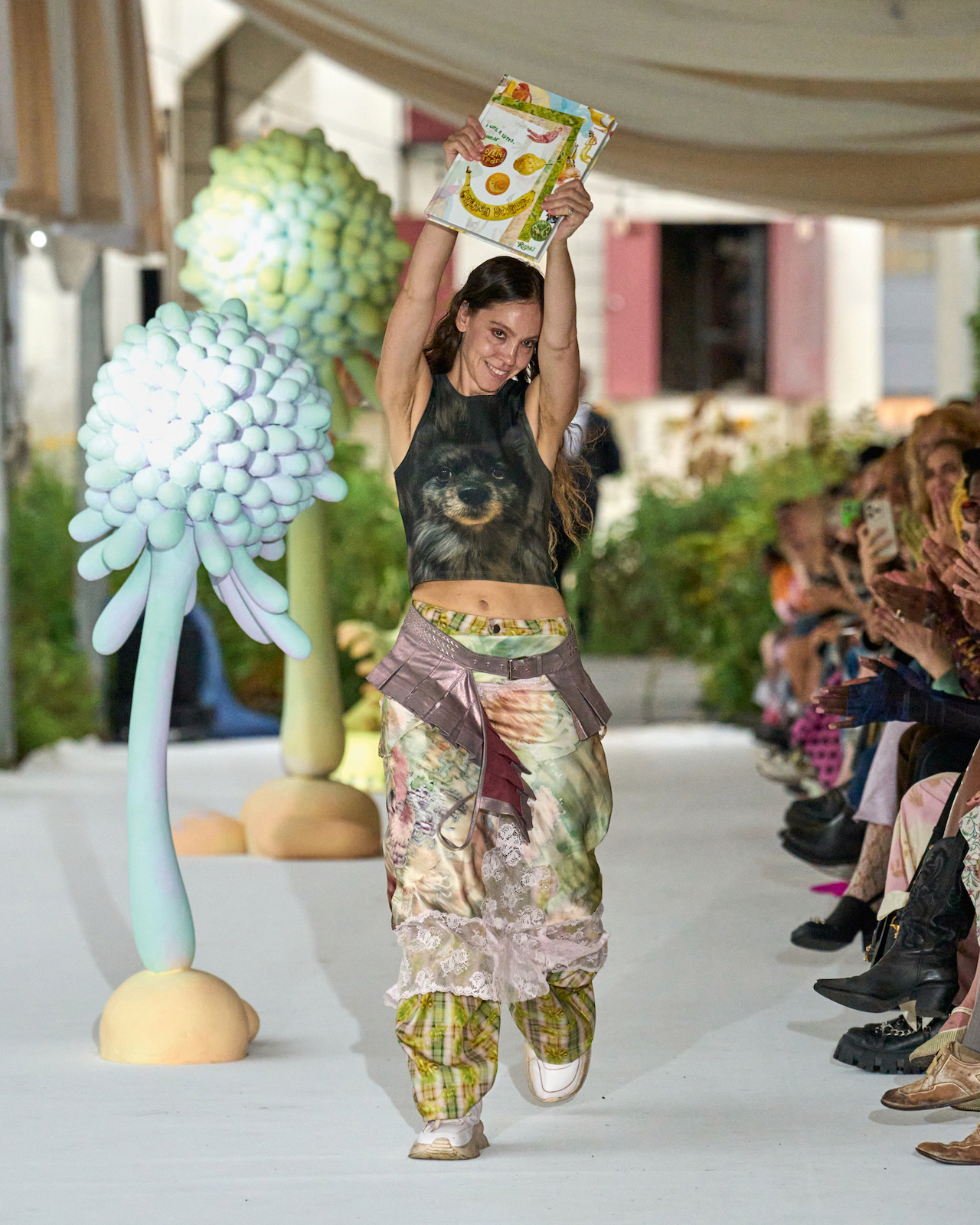

After a summer of catastrophic global weather events and with a massive hurricane churning through the Atlantic during New York Fashion Week in September, the city felt like it had been transformed into a subtropical climate zone. No one seemed to know how to dress for the Spring/Summer 2024 shows when it was alternately 90-plus degrees and muggy or torrentially raining — or even what the ethics are of participating in one of fashion’s biggest marketing moments when the planet is so clearly hurting.

Just before sunset at a rooftop farm in the Brooklyn Navy Yard, Collina Strada founder Hillary Taymour addressed the issue head on, sending models out in colorful slip dresses, cargo pants, and one-shoulder tops bricolaged together from bits of upcycled and regenerated fabrics. To the accompaniment of a rather-on-the- nose Oyinda song featuring the lyrics “Why are we here? / The earth is on fire,” they strode purposely forward, smiles plastered on their faces, carrying copies of Taymour’s new visual manifesto, I Care a Lotta, I Wear Collina Strada. Taymour also waved a copy aloft as she took her bow. The sky turned cotton candy pink, King Princess appeared to play a surprise set, and soon everyone was vibing. Many people stopped by the intern-staffed merch kiosk to grab a copy of the book after the show. Welcome to Collina Strada world, where climate awareness, pretty dresses, and hope can coexist.

Taymour’s book, published this fall by Rizzoli, is a 232-page compendium of trippy imagery from her first 20 NYFW collections. (She originally launched Collina Strada in 2008 as an accessories label while studying fashion design at the Fashion Institute of Design and Merchandising in LA, and debuted her first ready-to-wear collection for Spring/Summer 2014.) Highlights include models transforming into kangaroos, tigers, and dolphins (Fall/Winter 2021) and sporting Isamaya Ffrench-designed animal prosthetics (Fall/Winter 2023). The title comes from another Oyinda song Taymour regularly plays during her fashion shows.

Co-created with Collina Strada’s art director, Charlie Engman — who Taymour met via a Craigslist ad when she first moved to the city in 2010 — I Care a Lotta, I Wear Collina Strada explores how she made her now-signature cosmically dyed dresses and rhinestone-studded reusable water bottles a platform for social and environmental change. “I stay hopeful by making cute clothes that a woman can rule the world in,” says Taymour, only half-jokingly. “I want to cry all the time, but I just try to know within myself that with what I’m doing, I’m hopefully inspiring someone else and helping in the way that I can.”
“I stay hopeful by making cute clothes that a woman can rule the world in.”

Taymour’s particular brand of environmentalism is welcoming and non-judgmental. For the uninitiated, her book includes a sustainability cheat sheet with helpful tips like “use deadstock,” “be slow,” and “perfect is the frenemy of good.” Taymour would rather give you a vegan cookie covered in rainbow sprinkles than make you feel bad about having some pieces in your closet that aren’t made from organic or recycled fibers. She prioritizes common sense and wants to encourage you to buy less, and more thoughtfully. “If there are two dresses on a rack and one is sustainable and one isn’t, but the girl likes the other one, then that’s the one she should buy,” says Taymour. “She’s going to wear it more and it’s not going to go in the landfill.”

Of course, Taymour thinks it’s great if you want to wear her clothes. They’re primarily made from upcycled materials including second hand T-shirts from Ghana and organic, biodegradable rose sylk derived from rose bushes. But at the end of the day, it’s your decision. “You have to have an emotional connection to the garment itself, not because I’m slapping labels and green recycle signs all over it,” she says.














